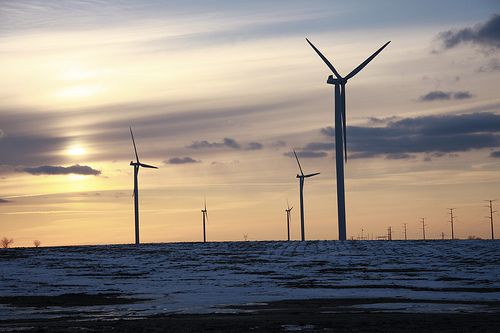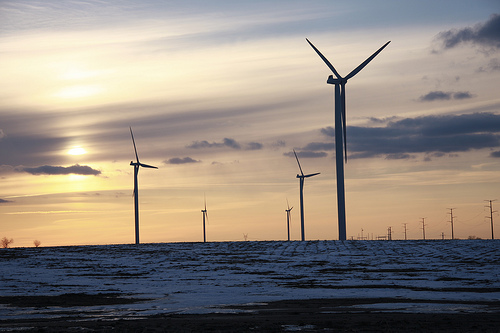Leaked report says renewables will surge by 2050
A IPCC special report looking at renewables, due next week, and leaked to Reuters, found that renewable energies such as wind and solar power are set to surge by 2050, as advances in technologies will mean costs will fall.

 Renewable energy will surge by 2050, when advances in technologies will lower their costs, according to a leaked IPCC report.
Renewable energy will surge by 2050, when advances in technologies will lower their costs, according to a leaked IPCC report.
The 900-page ‘Special Report on Renewable Sources and Climate Change Mitigation’, which is due to released early next week (9 May) compares 164 scenarios on renewable energy and is the most comprehensive analysis to date of trends and perspectives on renewable technologies.
Prior to the launch, 100 governments will jointly work to negotiate the Summary for Policy Makers; a guide for governments, investors and companies, but a draft version was leaked early to Reuters (5 May).
The report found, that under the majority of scenarios, renewable energies could supply above 100 exajoules (EJ) of energy a year by 2050 and could reach between 200 and 400 EJ a year in many scenarios. This is compared to 64 EJ produced in 2008.
This would be a result of renewables – excluding bioenergy – expanding by 3 to 20 times by 2050 compared to current numbers.
The major factor affecting this, according to the report would be the cost of renewable technologies coming down, with further advancements also taking place. The IPCC acknowledge that costs have already lowered, and further reductions are expected.
The IPCC register that this could mean a great potential for climate change mitigation, and would mean the need for policy to ensure deployment would no longer be needed, as expansion is expected even without new measures in policy suggested by the UN.
The draft, which was written before events in Japan, also found that renewables would probably account for a larger share of low-carbon energies than nuclear and carbon capture and storage technologies, and that their total share of the energy supply, while varying between scenarios, could be as much as 77 per cent by 2050.
The review found that renewables, if taken up, could lead to a cumulative carbon dioxide saving of 220-560 billion tonnes of CO2 from 2010 to 2050, compared to the 1.53 trillion tonnes predicted in a reference scenario for the same period
This report comes after the launch earlier in the year of the WWF’s vision for achieving a 100 per cent renewable energy future by 2050. ‘The Energy Report’ was based on a detailed scenario by energy consultancy by Ecofys and show opportunities and challenges towards this aim, but came too late to be considered by IPCC authors.
Commenting of the IPCC report, WWF said although it is unique in scope it underestimates the potential of deploying renewable energy even faster.
Stephan Singer, Director for Global Energy Policy at WWF International said: “IPCC delivers a landmark report that shows the rapid growth potential for renewable energy – but unfortunately does not endorse a 100 per cent renewable energy pathway until 2050.
“WWF’s report adds that missing piece – a bold vision with a clear timeline. We need to be fast if we want to tackle pressing issues as varied as energy security and efficiency, and at the same time keep climate change below the danger threshold.”
Image: Chauncey Davis | flickr





